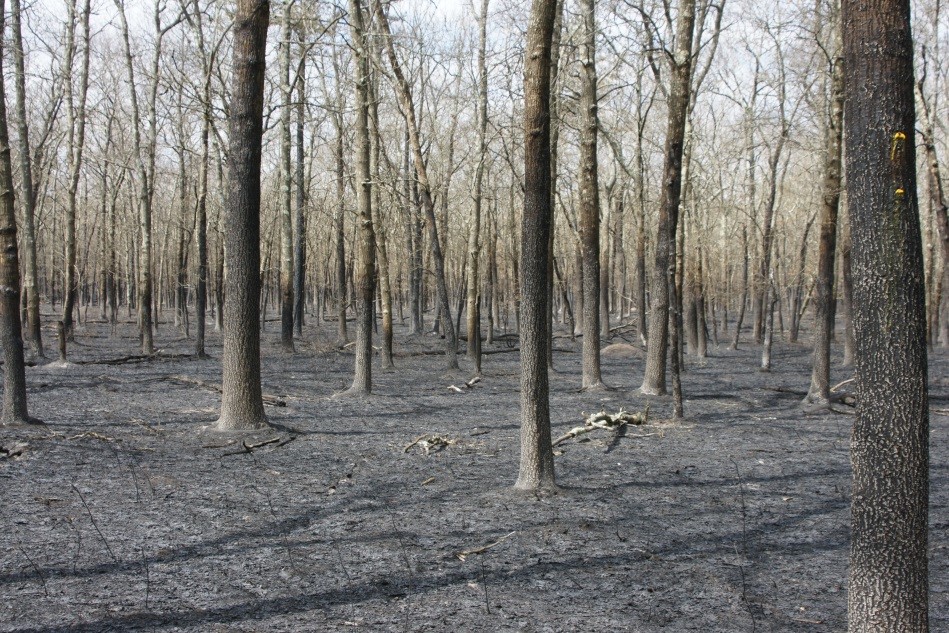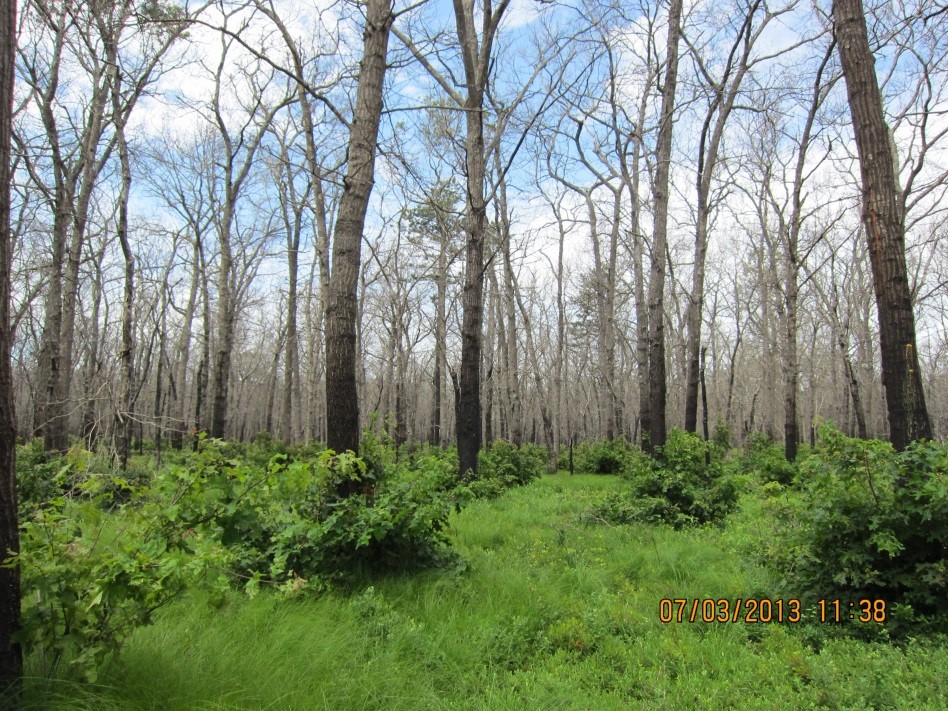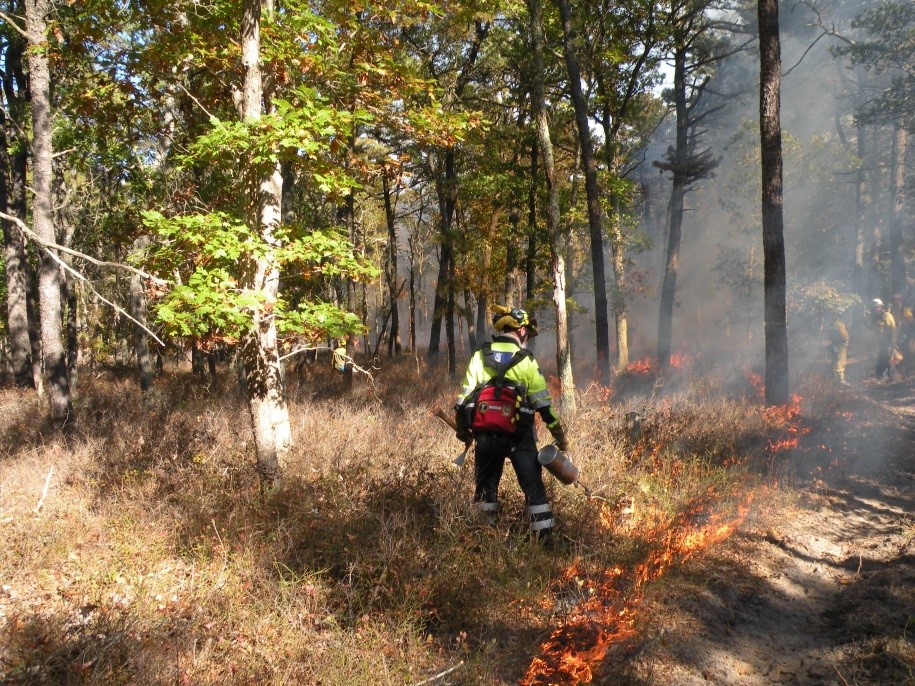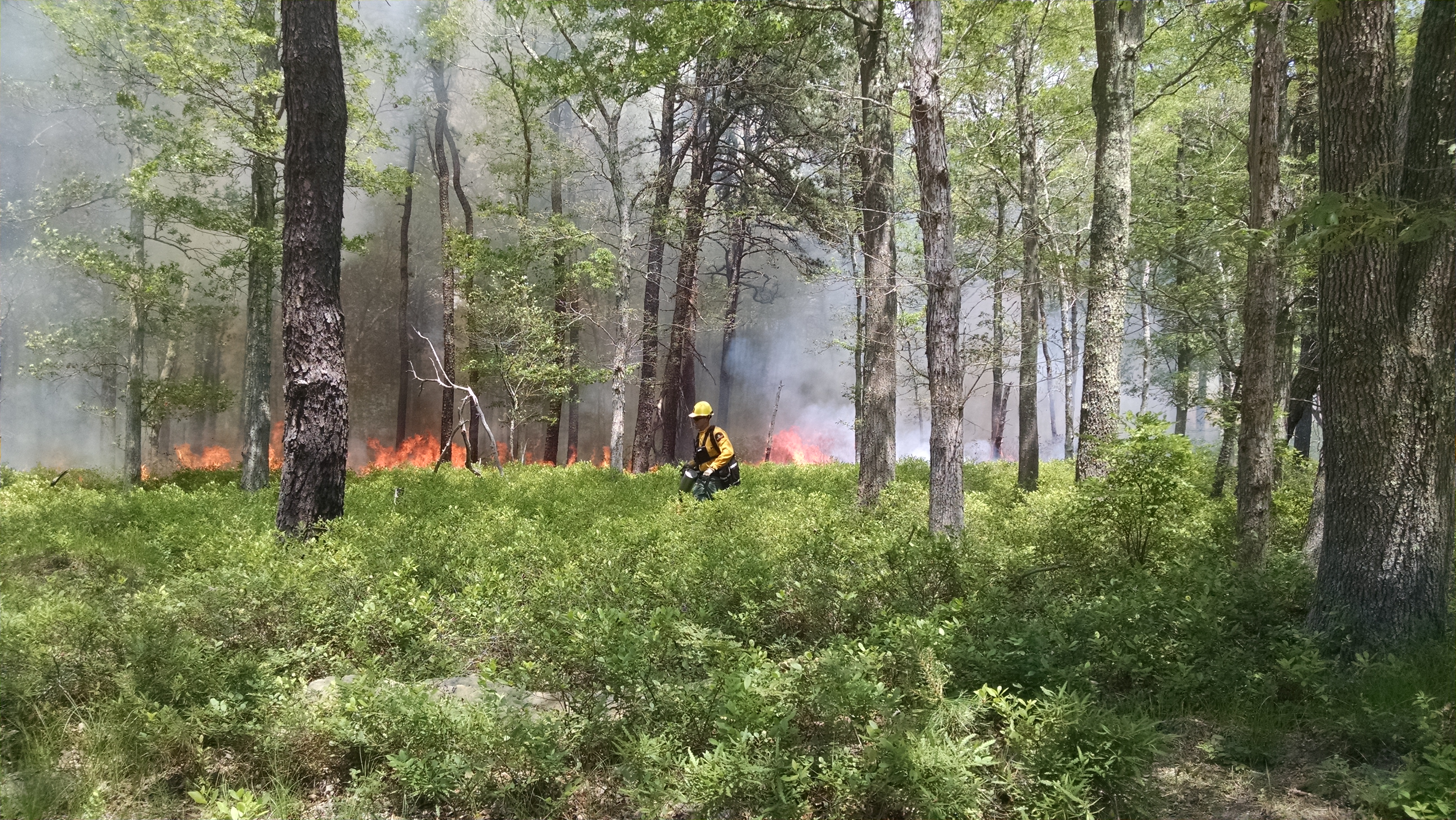Fire Management
BNL is located in the heart of the Central Pine Barrens Region of Long Island, a relatively uncommon natural community. Approximately 3,450 acres of Brookhaven National Laboratory’s site consists of pine barrens habitat. Pine barrens have evolved over hundreds to perhaps thousands of years in the presence of frequent fires. As a result, plant and animal species of the pine barrens have become adapted to conditions created by periodic fires and are actually restored and revitalized by it.
Throughout the Long Island Pine Barrens, fire has been aggressively suppressed for at least 70 years and as a result there has been a hazardous accumulation of flammable vegetation and dead woody debris in the forest understory which may be exacerbated by the introduction of southern pine beetle (Dendoctronus frontalis) to the area. This fuel buildup increases the risk of catastrophic wildfires outside the natural variability of the fire regime, which would not only adversely impact the existing ecology but endanger structures and human life. The fires of 1995 and the more recent Crescent Bow Fire that occurred on site in 2012 are reminders that we are at risk of catastrophic fires because of the extreme buildup of hazardous fuels in close proximity to development.
Reducing forest fuels through prescribed burning and mechanical treatments can mitigate wildfire risks protecting communities, fire fighters, and the environment. A prescribed burn is an intentionally ignited and carefully managed fire used to return landscapes to their natural balance with fire, benefiting plant and animal species that have evolved to rely on fire for survival. Trained fire management professionals conduct prescribed burns to ensure the safety of the burn crew, nearby residents, and private property.
Benefits of Prescribed Fire
- Restoring habitat: prescribed fire can increase and improve habitat for plants and animals, and improve overall forest health.
- Economics: fire-adapted ecosystems like the Pine Barrens will burn. The cost of wildfire suppression is many times greater than that of prescribed burning. Plus, the value of property lost to fire can be significant.
- Public safety: Too much or too little fire, at the wrong time and in the wrong place, can be a sign that nature is out of balance. The result can be intense wildfires that put homes and other structures, as well as the lives of residents and firefighters, at risk. The implementation of a prescribed fire program can mitigate
In 2004, BNL started using prescribed fire as a natural resource management tool during the New York State Wildfire and Incident Management Academy. Burns were successfully completed in 2004, 2006, and 2011. In order to achieve the desired levels of fuel reduction and ecological benefit, however, prescribed burns will now be conducted during the growing season (May-September).
Brookhaven National Laboratory has developed a comprehensive Wildland Fire Management Plan to provide guidance on fire preparedness, fire prevention, wildfire suppression, and the use of prescribed fires and mechanical means to control the amount of available combustible material.

This picture was taken the day after the April 9, 2012 wildfire that started at BNL and quickly spread to nearly 1,000 acres before weather conditions and natural barriers stopped its spread.

This picture was taken one year after the Crescent Bow Fire and shows the basal sprouting of the oak trees, also called coppicing; a response to being top-killed by fire. A variety of shrub and herbaceous plant species quickly colonized or re-sprouted after the fire.

A prescribed fire conducted during the NY Wildfire and Incident Management Academy in 2011.

A growing season prescribed burn conducted June 2017


